Instrumentation
SRS RGA-300 Mass spectrometer
The Stanford Research Systems Residual Gas Analyzer, RGA-300, is a high-performance mass spectrometer that can scan 1-300 AMU of mass range. It consists of a filament ionizer that uses electron impact to ionize the sampled gas, high-frequency-powered quadruple rods that filter to separate ions based on their mass to charge ratio, an electronics control unit and software, which together control the operation of the spectrometer. The mass spectrometer is currently used for studying supersonic mixing and combustion and catalytic combustion.
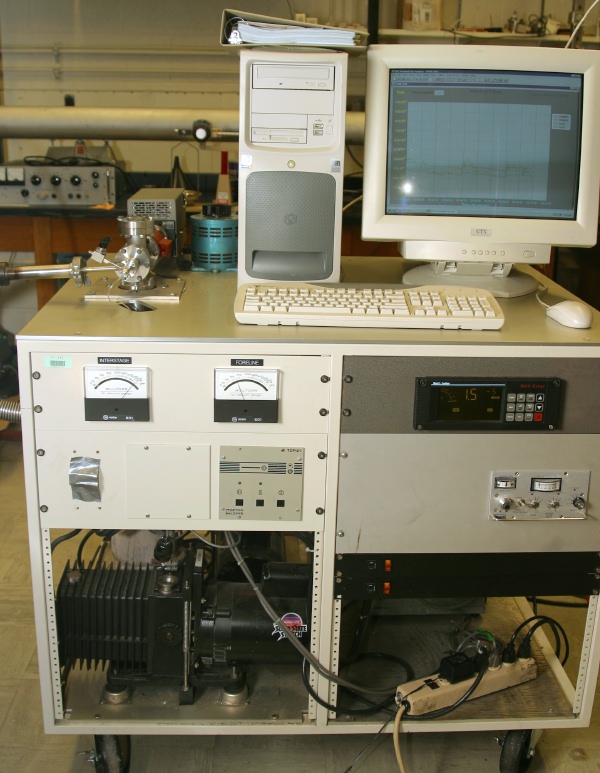
RGA300 Mass Spectrometer (top left) with control computer
and vacuum pump (bottom left) on its dedicated cart
Nicolet Magna-IR 560
The Nicolet Magna-IR 560 is a high-precision Fourier-transfor infrared sprectrometer with a resolution of up to 0.025 wavenumbers. Using a broadband IR source, liquid-nitrogen cooled sensor and NaCl windows, the 900-4200 cm-1 region of the infrared spectrum can be studied. The rapid scan speed allows full scans of 2cm-1 resolution to be taken every few seconds, making it possible to study pyrolysis and combustion processes of high energy density (HED) compounds and fluorinated polymers.
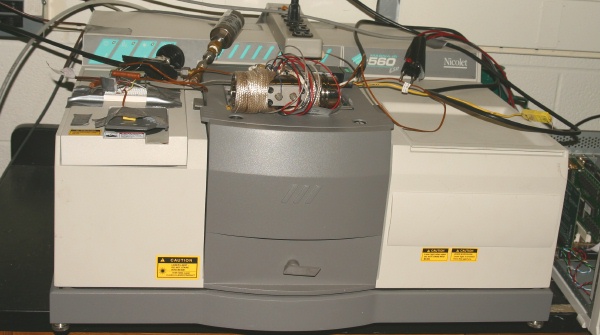
Nicolet Magna-IR 560 with the pressuzized, heated
test chamber here on top of the sample compartment
Spectraphysics GCR-150 Nd:YAG laser
This flash-lamp pumped, water-cooled unit is capable of produceing high-energy laser pulses a 1064 nm (650 mJ), 532 nm (400mJ), 355 nm (150 mJ) and 266 nm (70 mJ) at a repetition rate of 10 Hz. It is fitted with a 6350 injection seeder, which reduces the linewidth at 1064 nm from 1 cm-1 to 0.003 cm-1 and a piezo-electrically actuated terminating mirror that allows tuning of wavelength over a range of approximately 2 cm-1. The laser is also fitted with two Mark's banks controlling the Q-switch, allowing it to produce two closely spaced laser pulses per pump cycle, e. g. for PIV. Currently this versatile laser is used for PLIF, providing the 266 nm required for the excitation of acetone allowing mixing in a scramjet engine to be studied.
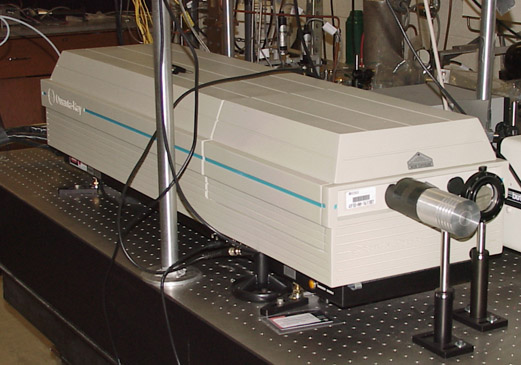
Quantaray GCR-150-10 laser with a beam dump capturing residual 1064 nm
light and a lens expanding the 532 nm SHG output
Roper Scientific/Princeton Instruments I-PentaMax
This intensified 12-bit CCD camera offers full 512x512 pixel frame acquisitions at a rate of up to 15 fps. While the temperature controller can maintain a CCD temperature below -20oC to reduce thermal noise, the MCP-200 pulser provides high voltage for the intensifier which can be gated down to about 10 ns. The camera can be used in the UV as well as across the visible spectrum. Currently this camera is used for an exciplex study of spray mixing near critical conditions.
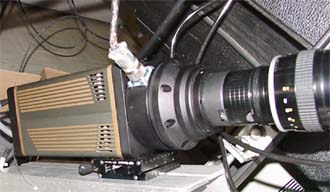
I-PentaMax camera with Nikon 135/2 lens and extension tube
Cooke Corporation DiCam-PRO
This intensified 12-bit CCD camera has a resolution of 1280x1024 pixels and offers shutter speeds down to 3ns. It is capable of acquiring two separate images with a spacing down to 500 ns and can acquire five independently controlled exposures on a single frame with a spacing of down to 20 ns between exposures. The maximum full frame rate is 7 fps. Its GaAsP photocatode allows detection over the wavelength range 400-700 nm with a peak quantum efficiency of 50% at 520 nm. Currently this camera is used for an exciplex study of spray mixing near critical conditions.
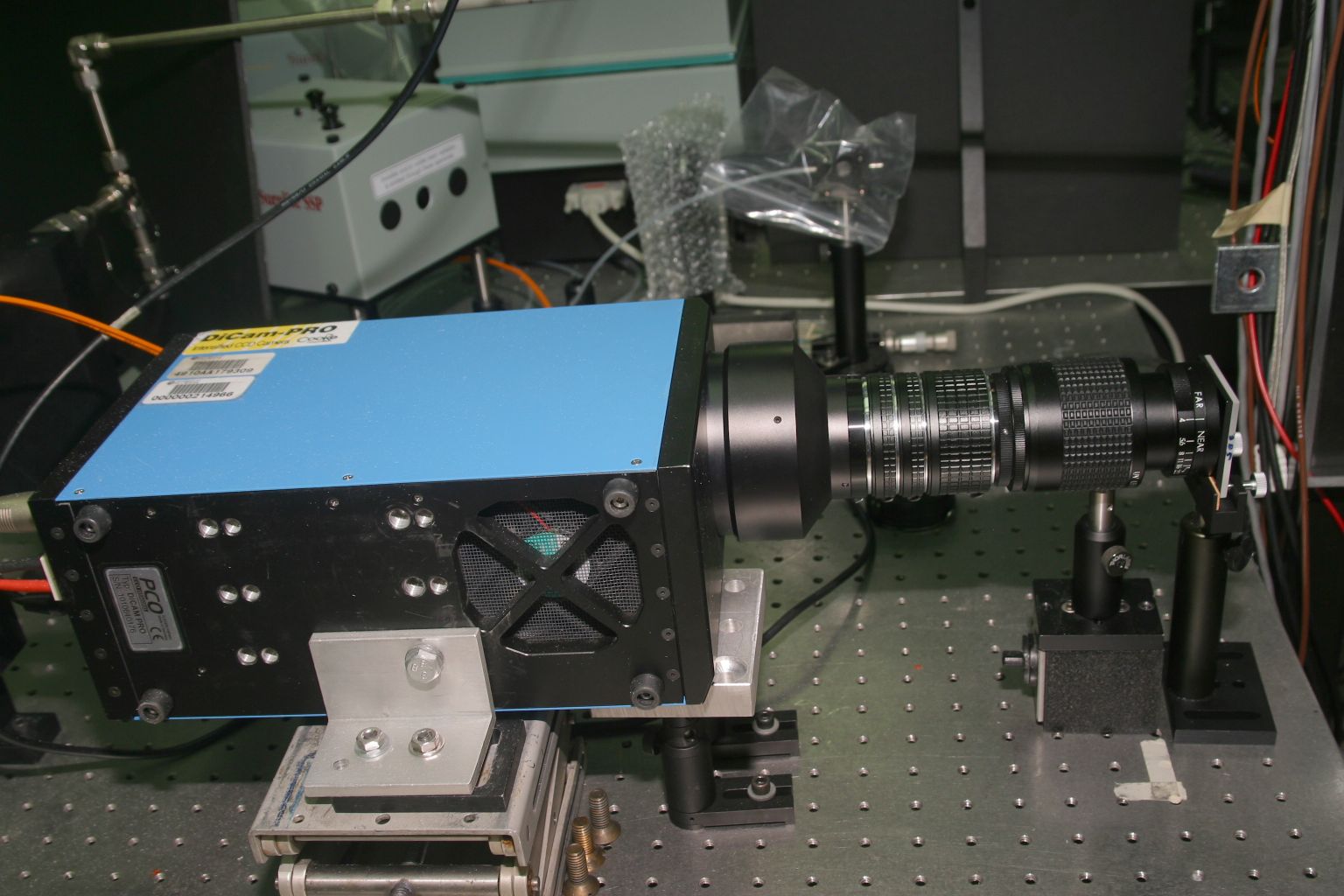
DiCam-PRO fitted with 105mm/4 UV lens and several extension tubes
Continuum Panther OPO
The Panther OPO is a mid-band optical parametric oscillator providing energies of up to 25 mJ per pulse and linewidths down to 6 cm-1. Complete tunability with no degeneracy gap in provided across the 410 nm - 2,550 nm range. The OPO is pumped by a dedicated Continuum SureLite II-10 laser that provides 150 mJ per pulse at 355 nm. The OP has also been fitted with a harmonic generator, making it possible to generate mJ pulse energies in the range 210-350 nm, making OH-PLIF possible.
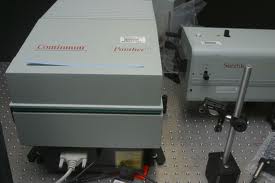
Continuum Panther OPO (box to the left) with SureLite II-10 355 nm pump laser (right)
PI Acton PIMax2 HB filmless ICCD
This 1024x1024 pixel ICCD offers very high quantum efficiencies in the UV and visible range of the spectrum (400-700 nm) with peak QE=53% at 470 nm. Acquiring full frames at up to 4 fps with gate widths down to ns range, it is a powerful tool for laser-induced fluorescence imaging, e. g. of liquid jet breakup.
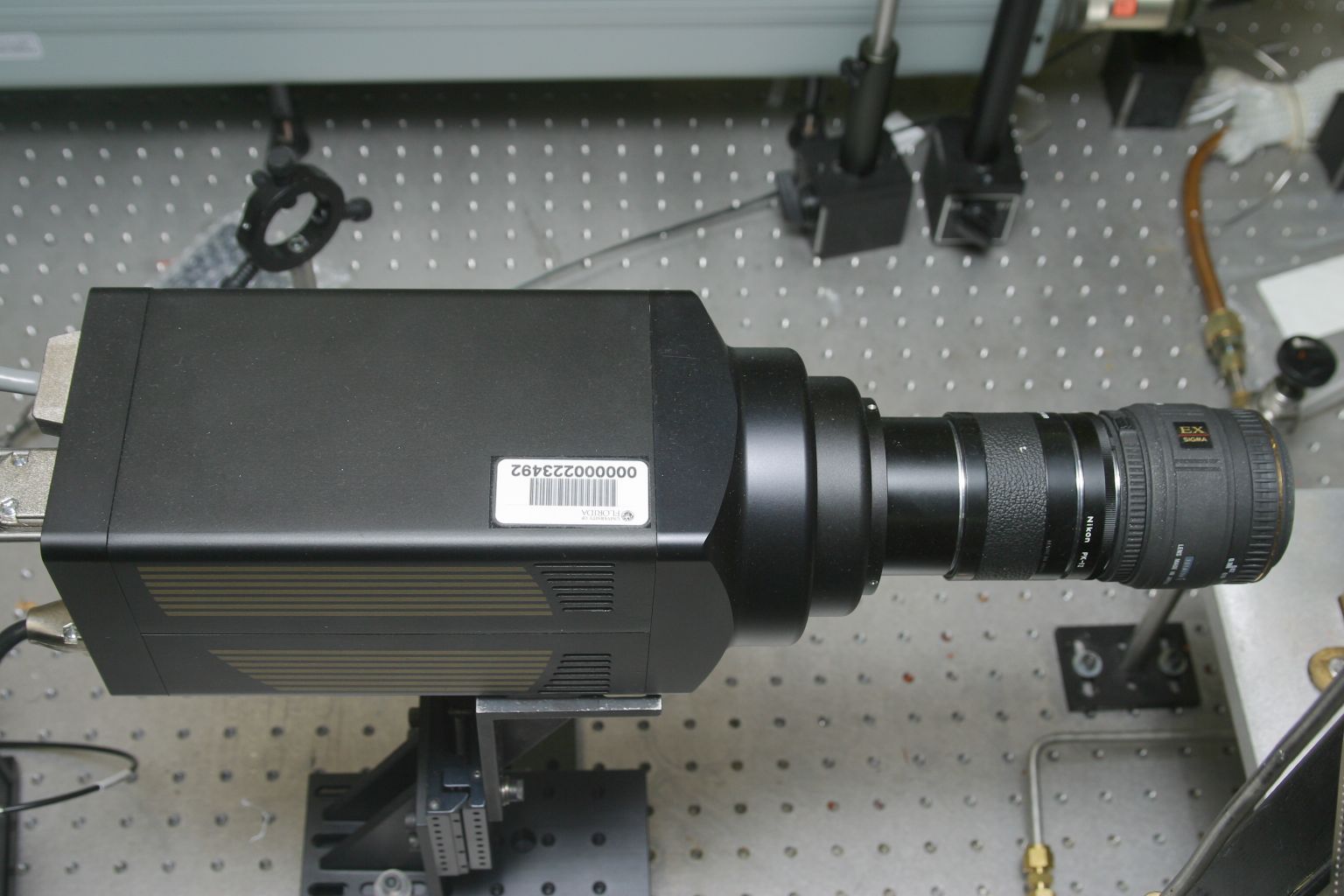
PI Acton PI-MAX2 camera fitted with a Nikon 2x teleconverter,
an extension tube and a Sigma 50mm/2.8 macro lens
PI Acton Echelle spectrometer with PIMAX2 SuperBlue ICCD
Combining a high-resolution echelle spectrometer combined with a sensitive 512x512 pixel ICCD, spectra covering the entire 200-600 nm range with a resolution of 0.04 nm can be aquired at rates up to 17 fps. Combining this with the pulsed lasers and OPOs available in the lab, shot-to-shot measurements of fluorescence spectra are possible, facilitating studies of pressure and temperature effects on the emission of several important combustion species.
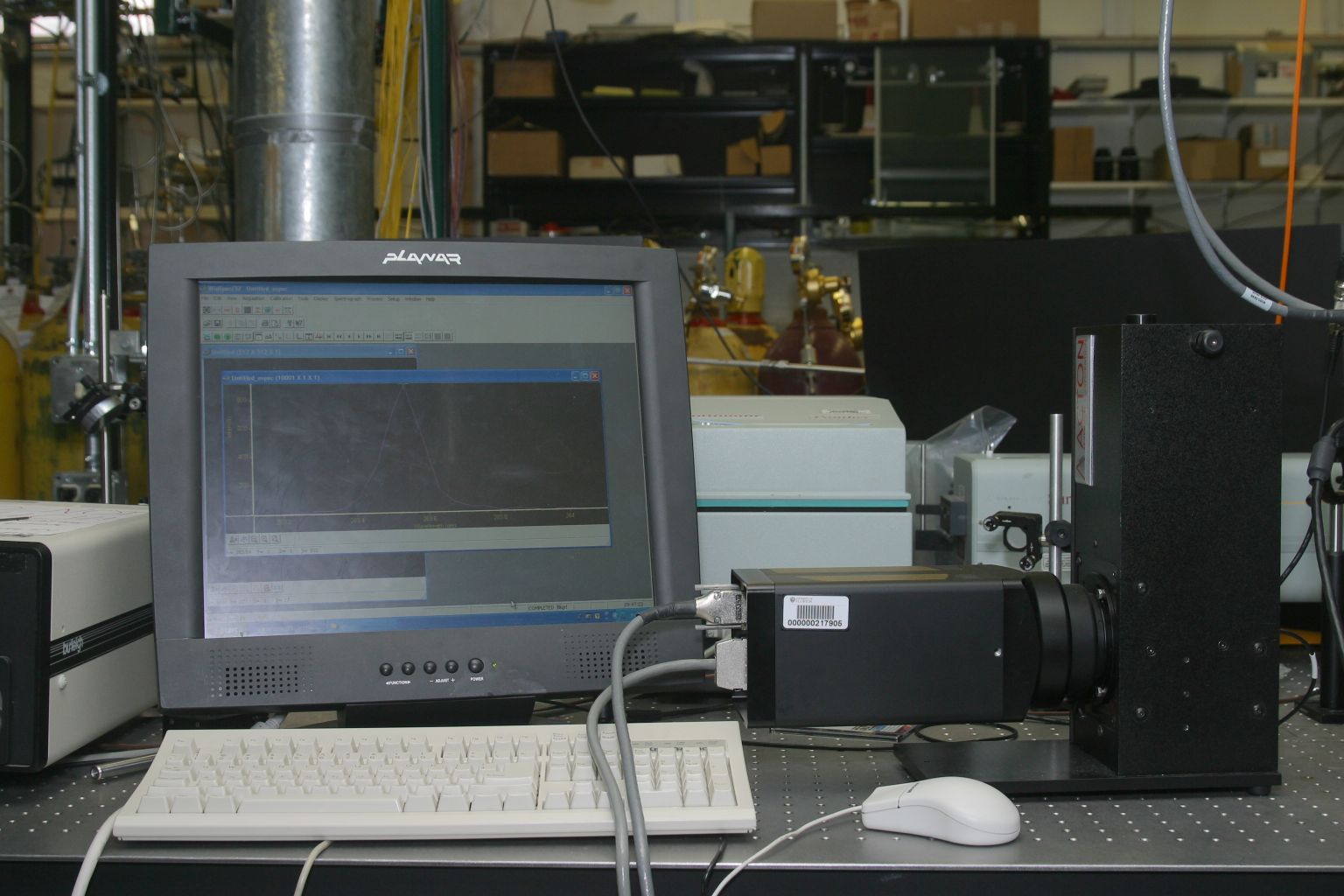
Echelle spectrometer (vertical black box to the right) with attached PIMAX2 camera
and control computer using WinSpec32 software
Photonics DC10-351 Nd:YLF laser
The Q-switched, diode-pumped DC10-351 laser is capable of producing uJ pulses of 351 nm light at repetition rates of up to 10 kHz with a peak power of 75mW at 3 kHz and a peak pulse energy of 50 uJ at 1 kHz. Using the 20 ns pulse duration, near-instantaneous images at kHz framerates can be acquired of unsteady phenomena such as cavitation.
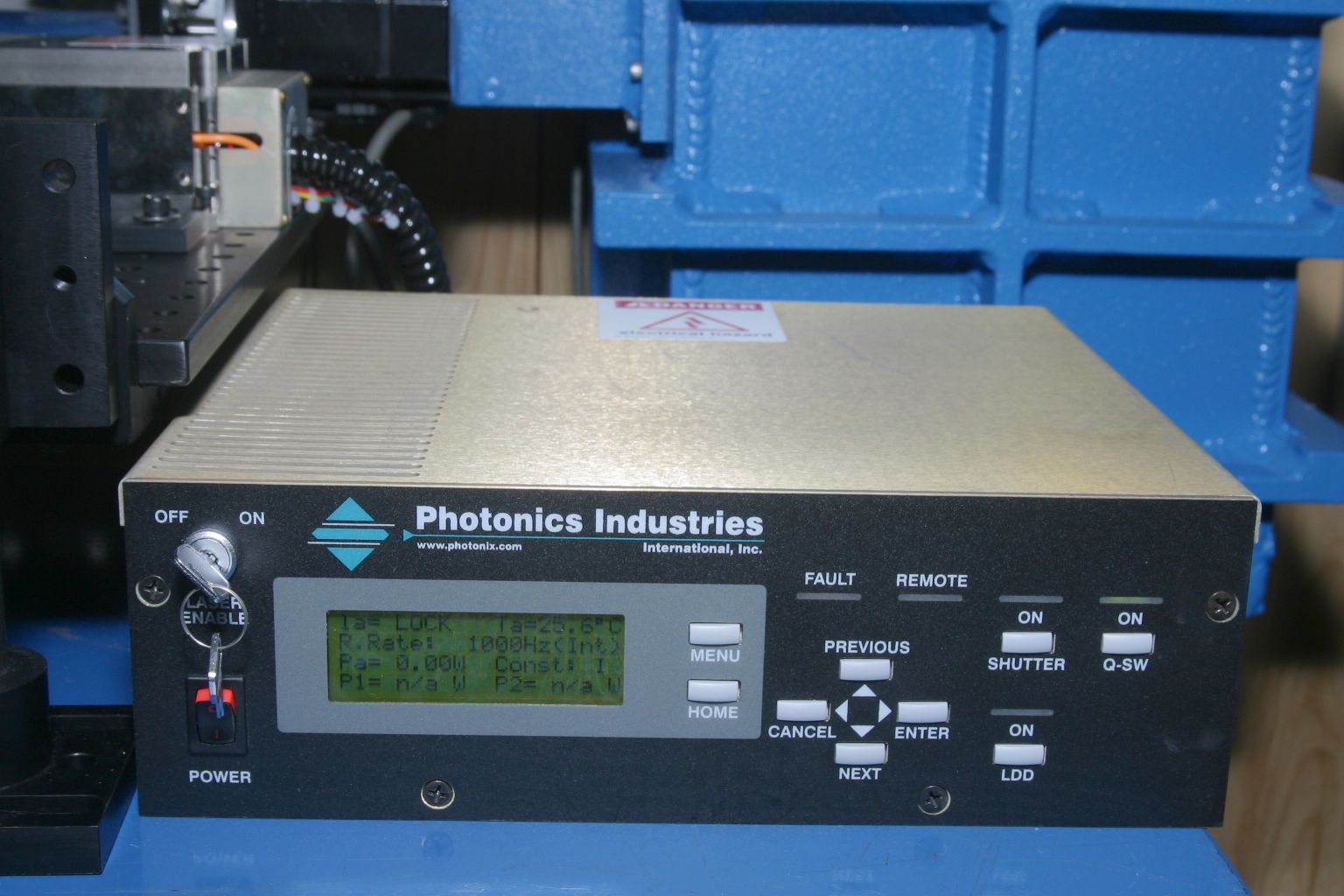
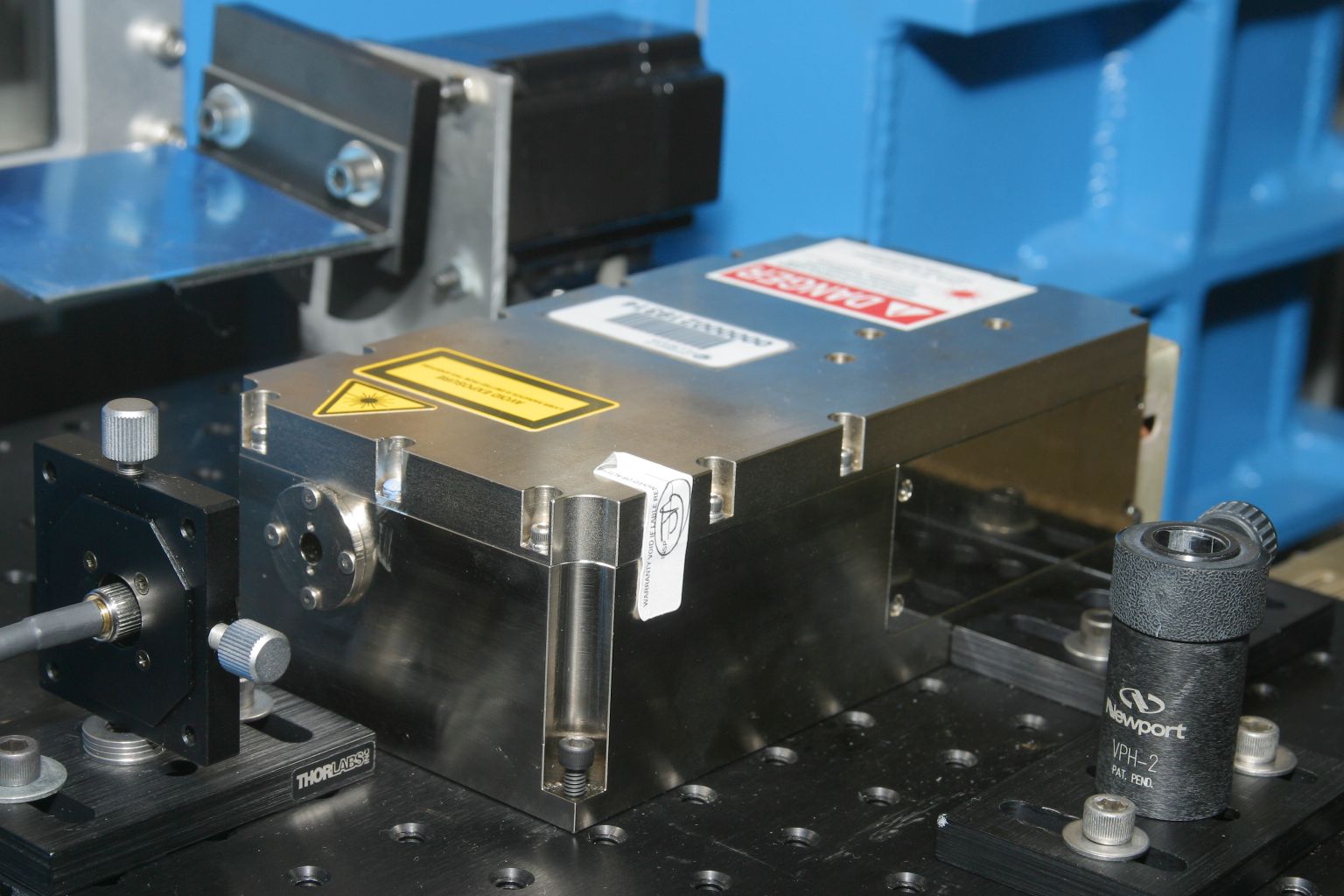
Nd:YLF laser controller (left) and head (right)
Back to the Combustion Lab homepage.








